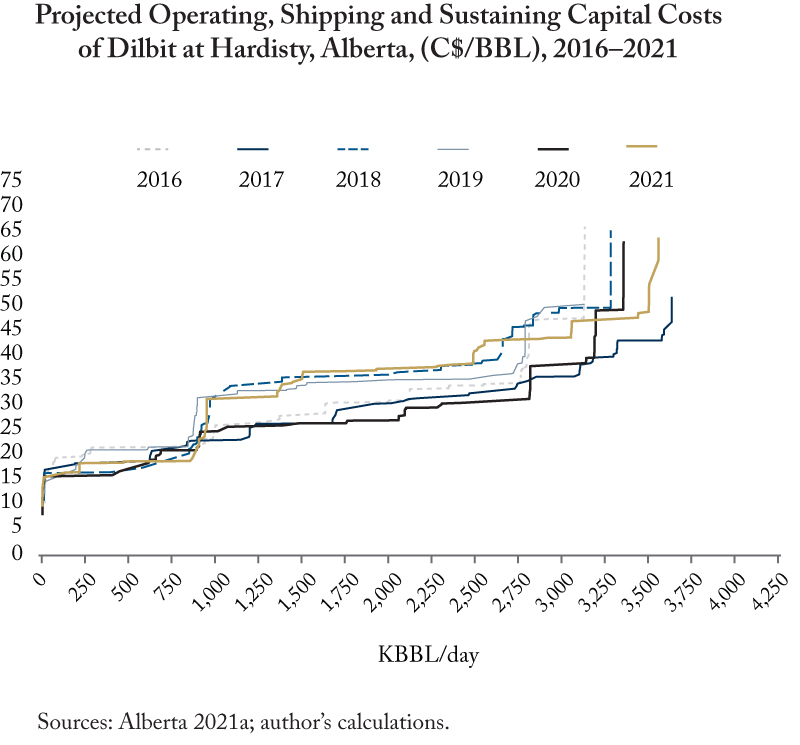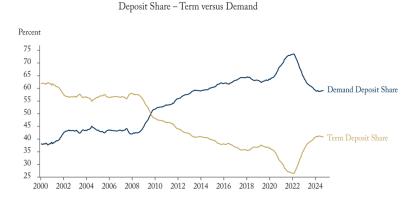Canadian and global climate change ambitions are generally associated with a goal of reducing reliance on fossil fuels. Within this context, the Canadian oil sands have been characterized as “too expensive” to maintain production if global crude oil demand falls, a view that appears regularly in the media and even in government reports.
Canadian oil sands projects do indeed require substantial up-front capital investments. However, once these investments are in place oil sands projects can maintain (or slightly increase) year-to-year production over several years or decades with relatively small marginal costs per barrel. This contrasts with non oil-sands producers where individual well productivity falls much faster over time, in turn necessitating new annual capital investments to maintain production.
Alberta oil sands producers file comparable cost data that allow for a comparison of how much it costs each oil sands project to produce a barrel of oil. Each line on the figure represents the cost over each barrel produced per year from 2016 to 2020. The resulting figure is, in effect, a short-run supply curve for clean crude bitumen. This figure includes costs such as diluting the bitumen and the cost of transporting the diluted bitumen to market. It also includes sustaining capital investments. The 2021 data show that 3.5 million barrels per day – nearly 95 percent of the sector’s production – were produced at a marginal cost below C$50 per barrel with the majority of that production (2.5 million barrels) produced at a marginal cost below C$40 per barrel. In years with low crude oil prices, the sector’s marginal costs are even also lower (below $40 in 2017 for example) because production and transportation of diluted bitumen requires refined petroleum in the form of condensate as an input.
The likely durability of oil sands production in a low-price environment means we cannot rely on potential global demand reductions to reduce Canada’s emissions footprint through changes in the quantity of production. Emissions reductions in the oil sands will have to rely on reductions in emissions intensity or some policy that expropriates assets or otherwise enforces reductions in production. If emissions reductions occur through output cutbacks, Canada will forgo the significant economic potential of continued production from legacy oil sands assets.





